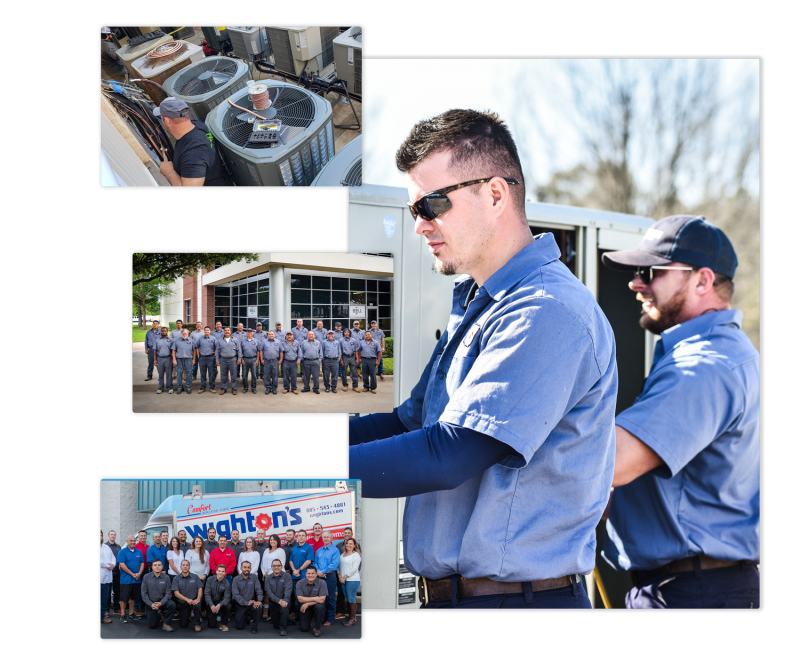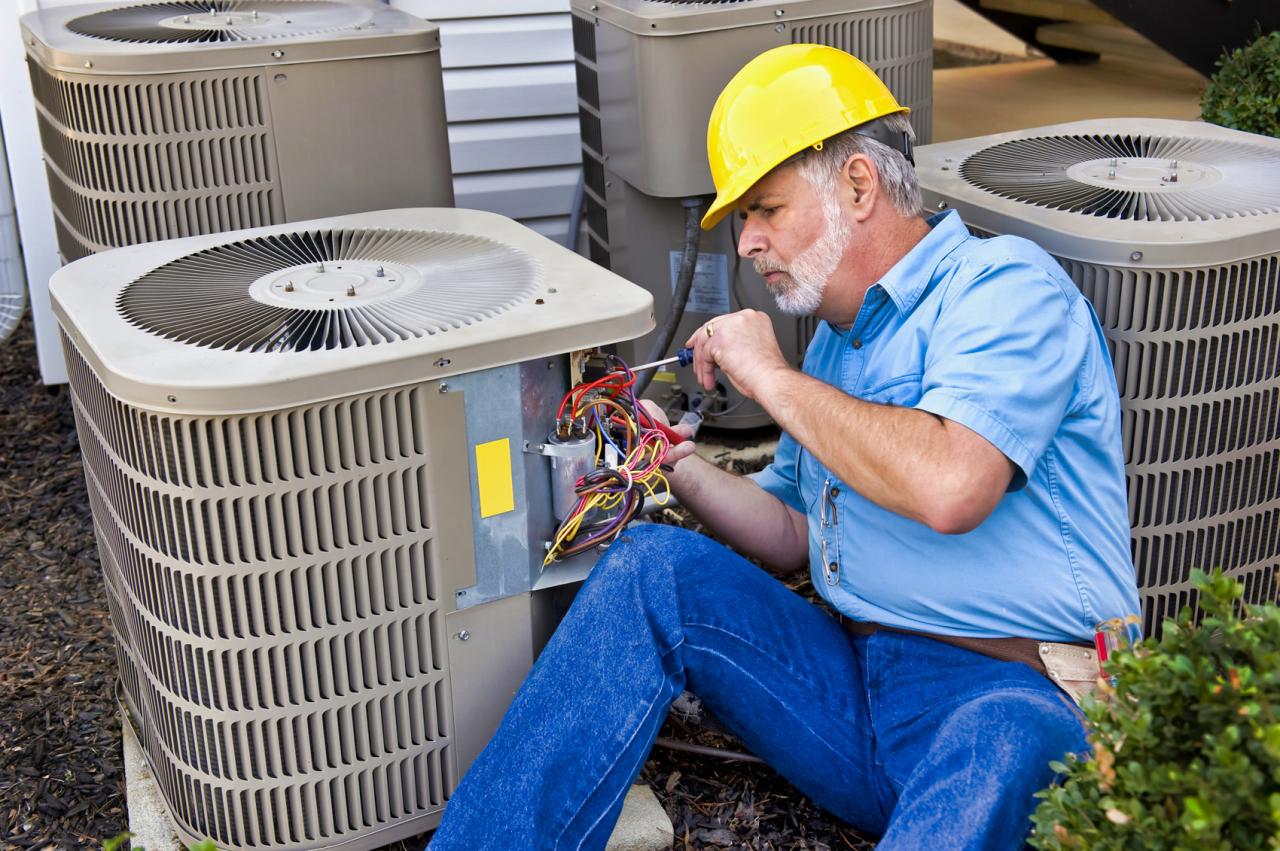Ever felt like your HVAC business was… *chilly* in the marketing department? Well, fear not, friend! This guide is your ultimate cheat sheet for transforming your HVAC business into a sizzling success story. We’ll delve into the nitty-gritty of HVAC marketing, from attracting the right clients to crafting a brand that’s as irresistible as a perfectly-maintained AC unit. Get ready to learn how to make your HVAC business the talk of the town, one strategically-placed ad at a time!
This comprehensive overview covers everything from defining HVAC marketing agency services and strategies to building a killer brand identity and measuring your marketing ROI. We’ll explore various marketing channels, client types, and key performance indicators (KPIs) to give you a complete picture of how to dominate the HVAC market. Think of it as your personal HVAC marketing guru, right in your digital pocket!
Defining HVAC Marketing Agency Services

HVAC marketing agencies are vital for HVAC contractors, helping them reach more customers and boost revenue. They specialize in crafting and executing effective marketing strategies tailored to the unique needs of HVAC businesses, from small residential companies to large industrial installations. This involves a deep understanding of the HVAC industry, its specific customer segments, and the most impactful marketing channels to generate leads and convert them into paying customers.
These agencies act as outsourced marketing departments, freeing up contractors to focus on what they do best: providing top-notch HVAC services. This includes everything from lead generation and brand building to customer acquisition and retention, all while leveraging data-driven insights and cutting-edge marketing techniques.
Core Services Offered
HVAC marketing agencies provide a comprehensive suite of services designed to improve a contractor’s visibility, attract new customers, and ultimately, drive sales. These services often include market research, competitive analysis, branding and messaging development, website optimization, search engine optimization (), pay-per-click (PPC) advertising, social media management, content creation, email marketing, and lead generation strategies. They also frequently handle public relations and local partnerships, and offer ongoing performance tracking and reporting.
Client Types Catered To
HVAC marketing agencies cater to a diverse range of clients, from small residential businesses to large commercial and industrial enterprises. Their services are adaptable to the specific needs and goals of each client type. Understanding the nuances of each market segment is critical to tailoring successful marketing campaigns.
Marketing Channels Used
A variety of marketing channels are employed by HVAC marketing agencies. These include digital channels like search engine optimization (), pay-per-click (PPC) advertising, social media marketing, and email marketing. They may also utilize traditional channels like print advertising, local partnerships, and direct mail campaigns, depending on the client’s specific needs and goals. A multi-channel approach often proves the most effective.
Key Performance Indicators (KPIs) Used
HVAC marketing agencies measure success based on a range of key performance indicators (KPIs). These KPIs track the effectiveness of various marketing campaigns and demonstrate the agency’s ability to deliver tangible results. Common KPIs include website traffic, lead generation, conversion rates, customer acquisition cost (CAC), return on investment (ROI), and brand awareness metrics. Tracking these KPIs allows the agency to fine-tune strategies for maximum impact.
Marketing Strategies for Different Client Types
| Client Type | Marketing Strategy | Target Audience | Key Performance Indicators |
|---|---|---|---|
| Residential | Focus on local , social media marketing, and targeted advertising on platforms frequented by homeowners (e.g., Facebook, Instagram). Content marketing through informative blog posts, videos, and homeowner guides. Highlighting value propositions such as cost savings, energy efficiency, and convenience. | Homeowners seeking affordable and reliable HVAC services. Potential customers often research online for solutions to their specific needs. | Website traffic from local searches, social media engagement, lead generation from online forms, and conversion rates from online inquiries. |
| Commercial | Concentrate on business-to-business (B2B) marketing, including targeted online advertising, content marketing for business professionals, and networking events. Emphasize expertise in commercial HVAC systems, efficiency, and maintenance. Build relationships with building managers and facility managers. | Building managers, facility managers, and property owners looking for reliable and cost-effective HVAC solutions for their commercial spaces. | Lead generation from commercial websites, qualified inquiries from businesses, and contracts secured. |
| Industrial | Focus on tailored solutions for industrial needs. Use specialized B2B marketing tactics and demonstrate expertise in large-scale HVAC systems. Develop strong relationships with key decision-makers in industrial facilities. | Industrial facility managers, engineers, and procurement officers needing comprehensive HVAC solutions. | Qualified leads from industrial sectors, quotes submitted for large projects, and contract value for industrial installations. |
Building a Strong HVAC Brand Identity

HVAC companies often get lost in the noise. To stand out, you need a powerful brand identity that resonates with customers. This isn’t just about a logo; it’s about crafting a complete experience that builds trust and loyalty. Think of it as your promise to the customer – and delivering on that promise consistently is key to success.
A strong HVAC brand identity goes beyond aesthetics. It’s about understanding your target audience, defining your unique value proposition, and communicating it effectively. This means crafting a compelling story, selecting the right visuals, and ensuring a consistent message across all platforms. This approach allows your company to connect with potential clients on a deeper level, fostering trust and brand recognition.
Key Elements of a Strong HVAC Brand Identity
A strong HVAC brand identity is built on several key elements. These elements work together to create a cohesive and memorable brand experience. A well-defined identity allows your business to stand out from the competition.
- Clear Value Proposition: What makes your HVAC company different? Highlighting your unique selling points (e.g., specialized services, eco-friendly options, exceptional customer service) is crucial. A strong value proposition clearly articulates the benefits your customers receive from choosing your services.
- Unique Brand Voice: Your brand voice is the personality and tone you use in all your communications. Is it friendly and approachable, or professional and authoritative? A consistent voice, whether friendly or authoritative, helps potential clients understand your brand’s character and values.
- Consistent Branding Across Channels: Maintaining a consistent look and feel across all your marketing materials (website, social media, print ads, etc.) is paramount. This reinforces your brand identity and creates a recognizable presence.
- Essential Visual Elements: Visuals play a crucial role in building brand recognition. A well-designed logo, color palette, typography, and imagery create a visual identity that resonates with your target audience. These elements help create a cohesive and memorable brand experience.
- Compelling Brand Story: Your brand story is the narrative that connects your business with customers. It highlights your company’s history, mission, values, and the people behind the brand. This creates a deeper connection and fosters trust with your target audience.
Visual Elements for a Successful HVAC Brand
Visuals are crucial for creating a lasting impression. Consistent use of these elements strengthens brand recognition.
| Visual Element | Description | Purpose |
|---|---|---|
| Logo | A logo is a visual representation of your brand. It should be memorable, easily recognizable, and reflect your brand identity. Think of the Nike swoosh – it instantly communicates the brand. | Serves as a visual shorthand for your brand, instantly recognizable and evoking a feeling. |
| Color Palette | A color palette is a collection of colors that represent your brand. Choose colors that evoke the right emotions and align with your brand’s personality. For example, blue often signifies trust, while red might convey energy. | Creates a visual mood and evokes emotions associated with your brand. A consistent color palette reinforces brand recognition across all platforms. |
| Typography | Typography refers to the style of fonts used in your brand’s communication. The font choice should align with your brand voice and aesthetic. Consider whether a modern, playful font suits your brand or a more classic, formal font is better. | Enhances readability and reinforces the brand’s personality. A consistent font style improves brand recognition. |
| Imagery | Imagery includes photos, illustrations, and graphics used in your brand’s communication. High-quality imagery that aligns with your brand’s aesthetic and values is important. | Provides visual context and helps tell your brand story. Imagery can evoke emotions and enhance brand recognition. |
Measuring HVAC Marketing ROI
HVAC marketing isn’t just about creating pretty ads; it’s about driving tangible results. Understanding your return on investment (ROI) is crucial for optimizing your campaigns and maximizing your budget. Without a clear picture of what’s working and what’s not, you’re essentially throwing darts in the dark. This section delves into the vital metrics for evaluating HVAC marketing success, empowering you to make data-driven decisions.
Knowing your ROI allows you to adjust your strategies in real-time, fine-tuning your approach for maximum impact. This data-centric approach translates directly to higher customer acquisition and profitability.
Essential Metrics for Evaluating HVAC Marketing Performance
Key performance indicators (KPIs) are the backbone of any successful marketing campaign. These metrics provide a clear snapshot of your marketing efforts’ effectiveness, revealing which strategies are producing results and which ones need adjustments. Common KPIs include website traffic, lead generation, conversion rates, and ultimately, the return on investment. By meticulously tracking and analyzing these metrics, you can pinpoint areas for improvement and fine-tune your HVAC marketing strategy.
Tracking and Analyzing Website Traffic for HVAC Businesses
Website traffic is a fundamental metric for assessing the effectiveness of your HVAC marketing efforts. Tools like Google Analytics provide detailed insights into website visitors, allowing you to understand user behavior, track engagement, and pinpoint potential bottlenecks. Crucially, this analysis reveals which marketing channels are driving the most valuable traffic, providing insights into optimizing your campaigns.
Importance of Lead Generation and Conversion Rates for HVAC Marketing
Lead generation is the lifeblood of any HVAC business. Tracking lead generation metrics allows you to gauge the effectiveness of your marketing strategies in attracting potential customers. Conversion rates, the percentage of leads that convert into paying customers, are equally important. High conversion rates indicate that your marketing messages resonate with potential customers, effectively translating interest into tangible business opportunities.
Calculating the Return on Investment (ROI) of HVAC Marketing Campaigns
Calculating ROI involves comparing the revenue generated by your marketing campaigns to the costs associated with those campaigns. A simple formula is: [(Revenue Generated – Marketing Costs) / Marketing Costs] x 100. A high ROI signifies that your marketing efforts are producing substantial returns, justifying the investment. For instance, a 200% ROI indicates that for every dollar spent on marketing, you’re generating $3 in revenue.
Key Factors Influencing HVAC Marketing ROI
Several factors influence the ROI of HVAC marketing campaigns. These include the quality of your leads, the effectiveness of your sales process, the competitive landscape, and the accuracy of your target market segmentation. Identifying and understanding these factors allows for targeted adjustments, ensuring your campaigns are aligned with your specific business needs and market conditions.
Table Comparing Different Lead Generation Methods for HVAC Businesses
| Lead Generation Method | Pros | Cons |
|---|---|---|
| Email Marketing | Targeted outreach, cost-effective, measurable results, nurturing leads, building relationships | Requires a robust email list, potential for low open and click-through rates, spam filters, deliverability issues. |
| Social Media Ads | Targeted advertising, broad reach, highly visual, real-time engagement, potential for viral campaigns | Requires a strong social media presence, potentially high costs, ad fatigue, algorithm changes, measurement challenges. |
| Search Engine Optimization () | Organic traffic, long-term visibility, high credibility, cost-effective, attracting qualified leads | Time-consuming, slow results, requires ongoing maintenance, competition for s, algorithm changes. |
| Paid Search Advertising (PPC) | Targeted advertising, immediate visibility, high click-through rates, measurable results, precise targeting | Cost-per-click, high competition, requires ongoing management, fluctuations in ad costs. |
Case Studies and Examples

HVAC marketing is a dynamic field, and success hinges on tailoring strategies to specific client needs. Understanding how other HVAC marketing agencies have achieved results provides valuable insights. These case studies aren’t just about the *what*—they’re about the *why* and the *how*, giving you actionable strategies to implement for your own campaigns.
Successful HVAC marketing campaigns often leverage a blend of digital and traditional methods. They identify key pain points for customers and address them with targeted messaging. This approach builds trust and fosters long-term relationships. The best case studies demonstrate not just the outcome but also the process, revealing the strategies, challenges, and solutions.
Successful HVAC Marketing Campaign Examples
Understanding how successful campaigns were built allows for the implementation of similar strategies. A strong understanding of these campaigns, including the strategies and results, provides actionable takeaways. Analyzing these examples highlights the importance of a multi-faceted approach to HVAC marketing.
| Campaign Name | Strategy | Results |
|---|---|---|
| “Cool Comfort Solutions” Campaign | Targeted online advertising (Google Ads, social media) focused on specific customer pain points (e.g., high energy bills, poor indoor air quality). Included a strong call-to-action for scheduling consultations and offering promotions for early sign-ups. Used local to optimize online presence for regional searches. | Generated a 35% increase in qualified leads over a 6-month period. Conversion rate from leads to appointments improved by 15%. Increased brand awareness in the local community, as evidenced by a 20% increase in positive online reviews. |
| “Winter Warmth Initiative” Campaign | Focused on community outreach and engagement. The campaign included partnering with local charities, sponsoring community events, and offering discounted services to senior citizens. Leveraged social media for announcements and updates. | Increased brand visibility and reputation within the community. Generated a 25% increase in customer referrals. Established the company as a trusted and reliable local service provider. Strong positive media coverage, leading to a 10% increase in brand mentions in local publications. |
| “Energy Efficiency Focus” Campaign | Emphasized energy-efficient HVAC solutions. Developed educational content on energy savings, including blog posts, social media infographics, and videos. Offered free energy audits and consultations. | Improved brand perception as a proactive and knowledgeable company, leading to a 12% increase in brand trust based on customer surveys. Increased lead volume by 20% and generated a 15% increase in average contract value, showcasing the impact of high-value solutions. |
Detailed Case Study: “Eco-Friendly Air” Campaign
This campaign targeted environmentally conscious homeowners. The agency implemented a multi-pronged approach. First, they created educational content on the benefits of eco-friendly HVAC systems. Next, they used targeted social media ads to reach specific demographics interested in sustainability. They partnered with local environmental organizations for cross-promotion. The results were a 20% increase in leads from environmentally conscious consumers, showing the effectiveness of a focused approach.
Challenges and Solutions
A common challenge in HVAC marketing is accurately measuring ROI. Agencies often overcome this by implementing robust tracking systems for website traffic, lead generation, and customer acquisition costs. Another challenge is maintaining consistent brand messaging across all platforms. Solutions include creating a comprehensive brand style guide and holding regular team meetings to ensure consistent messaging.
Final Thoughts

So, there you have it! A sizzling summary of how to ignite your HVAC marketing. We’ve covered defining your services, crafting effective strategies, building a compelling brand, and measuring success. Now go forth and conquer the HVAC market! Your clients will thank you (and your bank account will thank you too!).
Remember, a well-oiled HVAC marketing machine is essential for thriving in today’s competitive landscape. This guide provides a roadmap for success, so get ready to boost your business and enjoy the rewards of a flourishing HVAC empire!





